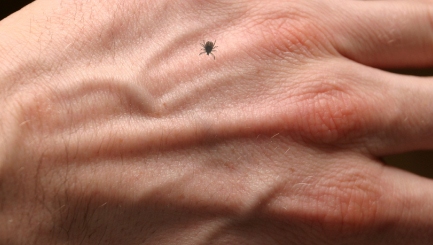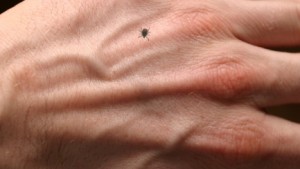What is Chronic Lyme disease?
It is a circular red rash, result of an earlier tick bite, perhaps about a month ago.
It is a harmful bacteria carried by species called “Ixodes Scapularis”, which is transmitted into the skin of humans, dogs, or other animals. The circular rash spreads quickly and resembles a bulls eye, with lighter coloring inside, graduating to deeper redness on the outer fringes
Ticks live on wild animals and birds, burrowing deep into fur or feathers and latching onto unsuspecting humans or house pets that travel through wooded areas or fields.
What are the symptoms of Chronic Lyme disease?
Chronic Lyme disease causes several flu-like symptoms, such as chills and fever, body aches, muscle weakness, and inflammation in the joints. It is difficult to diagnose at the initial stage. As the symptoms closely mimic the flu, victims may put off seeing a Doctor and try to treat the disease with home remedies or over-the counter cold medicines. When symptoms worsen or become persistent, seeing the Doctor is the best recourse to begin treating chronic Lyme disease.
What are the side effects?
In addition to arthritic conditions, it can affect the brain, heart, and neurological system. Cardiovascular conditions, such as heart block or palpitations have also been reported. In severe cases, brain damage can occur if blockages prevent blood from traveling to the cranium.
It is advisable to go for blood tests, to determine whether a patient’s overall malaise is caused by Lyme disease. Once diagnosed, treatment for the infection will include a series of antibiotics to stem the effects of bacteria; along with aspirin, ibuprofen, or other anti-inflammatory medicine to treat pain and arthritic symptoms. Within three weeks, patients are usually rid of the infection and swelling and pain should subside.
How to prevent Chronic Lyme disease?
To prevent a tick infestation and ward off chronic Lyme disease, homeowners need to practice good hygiene and preventive maintenance. Keeping lawns mowed helps prevent tick infestation and chronic Lyme disease. Early detection can help prevent the spread of chronic Lyme disease. Flu-like symptoms or a circular, red bulls eye rash noticeable one to two days after hiking in a wooded area should not be ignored.
The earlier chronic Lyme disease is diagnosed the better the outcome. When a tick bites, it latches onto the skin with a fury, burying its tentacles into the skin and burrowing its body onto the wound. Ticks should be destroyed and disposed of before they can bite humans or burrow deeply within another animal’s fur.

